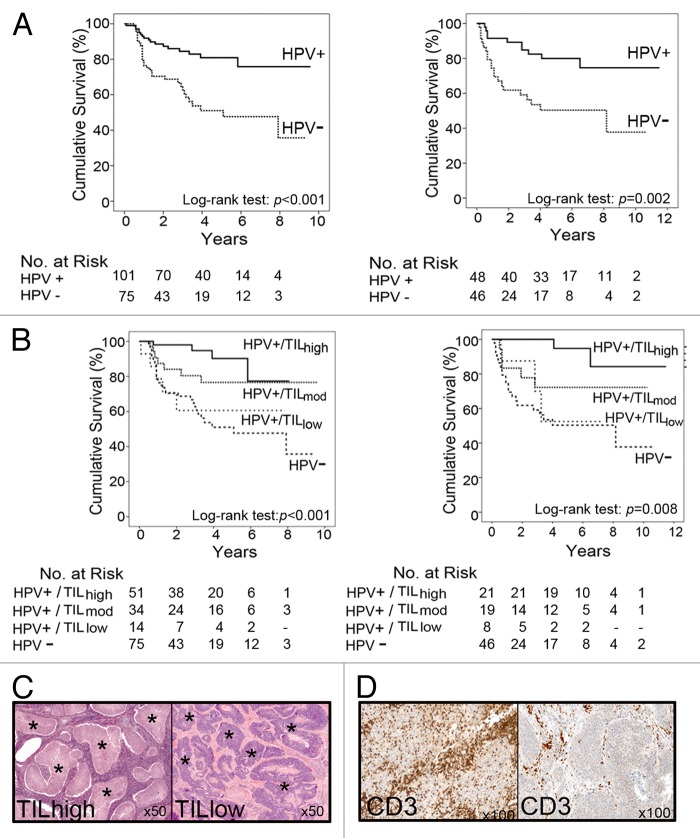Figure 1. Disease-specific survival of oropharyngeal squamous cell carcinoma (OPSCC) patients from independent cohorts. (A) Kaplan–Meier curves depicting the disease-specific survival of OPSCC patients stratified according to human papillomavirus (HPV) status (P < 0.001, P = 0.002, respectively, as per log rank test). (B) Kaplan–Meier curves depicting the disease-specific survival of OPSCC patients stratified according to HPV status and tumor-infiltrating lymphocyte (TIL) levels. The survival of patients with HPV+/TILlow tumors is similar to that of HPV− patients. (C) Hematoxylin and eosin (H+E)-stained sections showing examples of OPSCC with high and low TIL levels. Tumor islands are marked with an asterix. In TILhigh OPSCCs, lymphocytes fill the stromal compartment and infiltrate into tumor islands. (D) Immunochemistry showing typical examples of HPV+ OPSCCs with high and low infiltrates of CD3+ T cells.

An official website of the United States government
Here's how you know
Official websites use .gov
A
.gov website belongs to an official
government organization in the United States.
Secure .gov websites use HTTPS
A lock (
) or https:// means you've safely
connected to the .gov website. Share sensitive
information only on official, secure websites.
